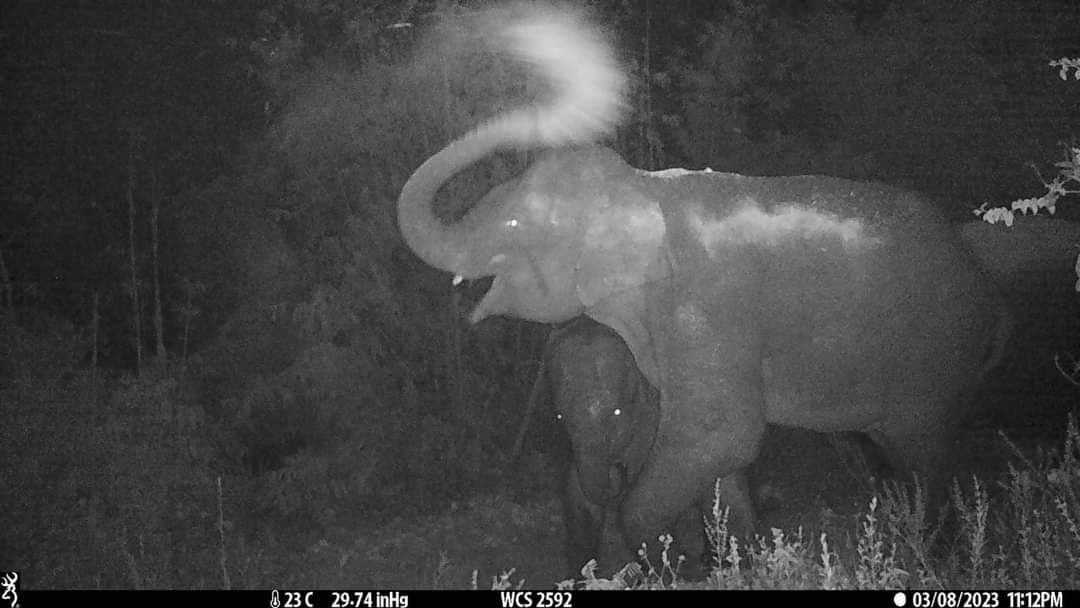
Asian elephants captured by camera traps set up by the Wildlife Conservation Society (WCS) Cambodia. WCS CAMBODIA
The Wildlife Conservation Society (WCS) Cambodia has released photographs of wild elephants captured by camera traps through its “Human-Wildlife Conflict programme” at the Keo Seima Wildlife Sanctuary.
The WCS said that living close to nature has its challenges. People and wildlife often cross paths in the sanctuary, where forests and villages intertwine. Elephants, drawn to the tasty bananas and cashew fruits, can't resist visiting farms for a snack, which upsets farmers in local communities.
“That's where our Human-Wildlife Conflict programme comes in. We support these communities by offering advice on preventing conflict and listening to their concerns,” it said in a social media post.
To better understand their elephant neighbours, the WCS has set up camera traps to capture their daily lives. The organisation aims to identify each of the individual 100-130 elephants living in the wildlife sanctuary.
“By getting to know them individually, we can develop tailored plans to reduce conflicts and even establish early warning systems for elephants that like to visit farms for food,” it said.
The Ministry of Environment estimates that there are currently between 400 and 600 Asian elephants in Cambodia, most of which live in the Cardamom Mountains, the northern plateau of the Tonle Sap Lake and the eastern highlands of Mondulkiri, Ratanakkiri and Stung Treng provinces. These areas have dense vegetation and steep hills, both conducive to the survival of elephants and other wildlife. The number of domestic elephants is estimated at more than 70.
“Asian elephants are considered a culturally important species, and play an important role in the ecosystem. They protect the survival of other species in their habitats, and play a part in scattering seeds in the ecosystem as they dig up soil for other animals to use.
Asian elephants are under serious threat throughout their global habitat and are listed as a globally endangered species on the International Union for Conservation of Nature (IUCN) Red List








